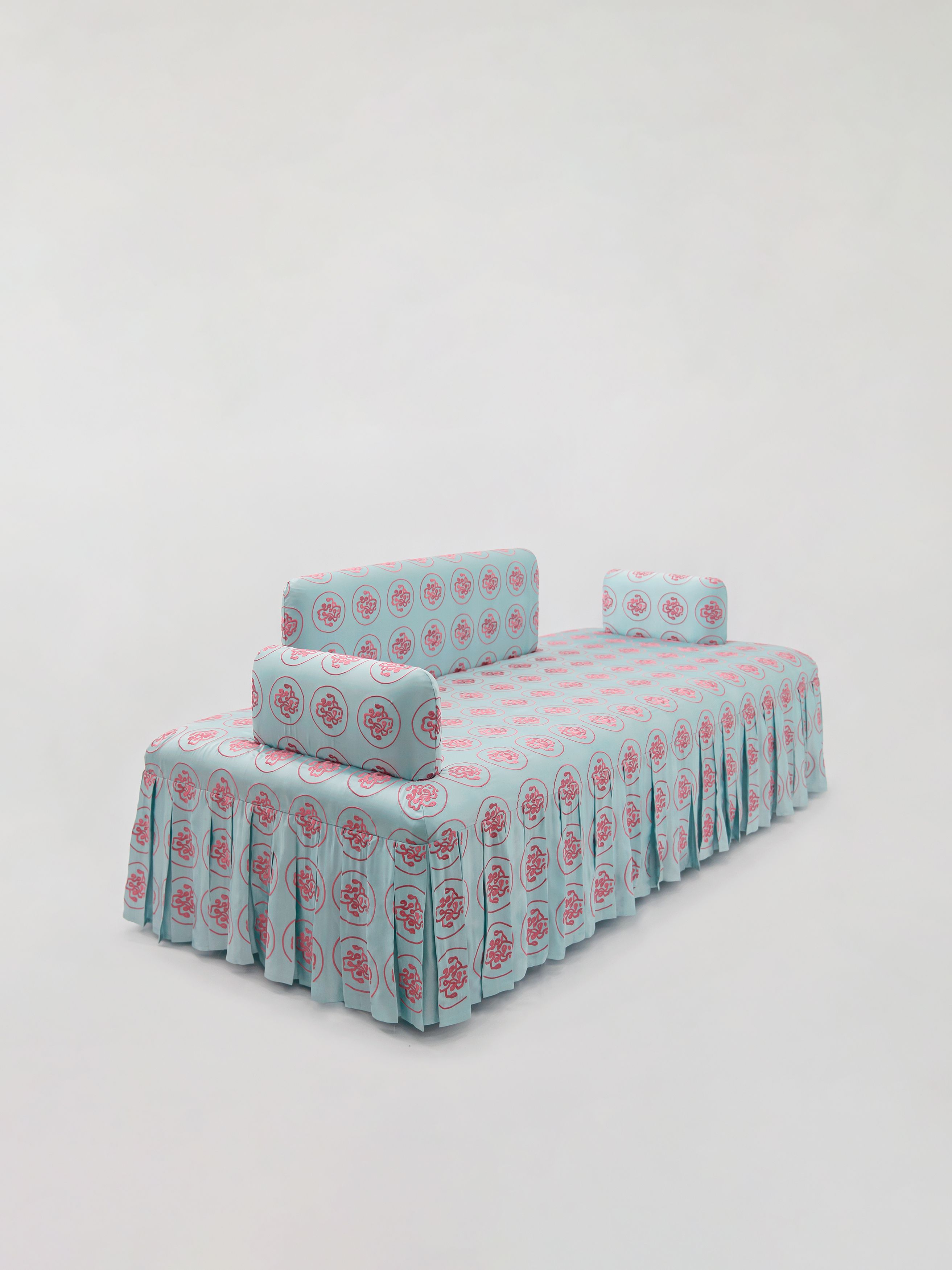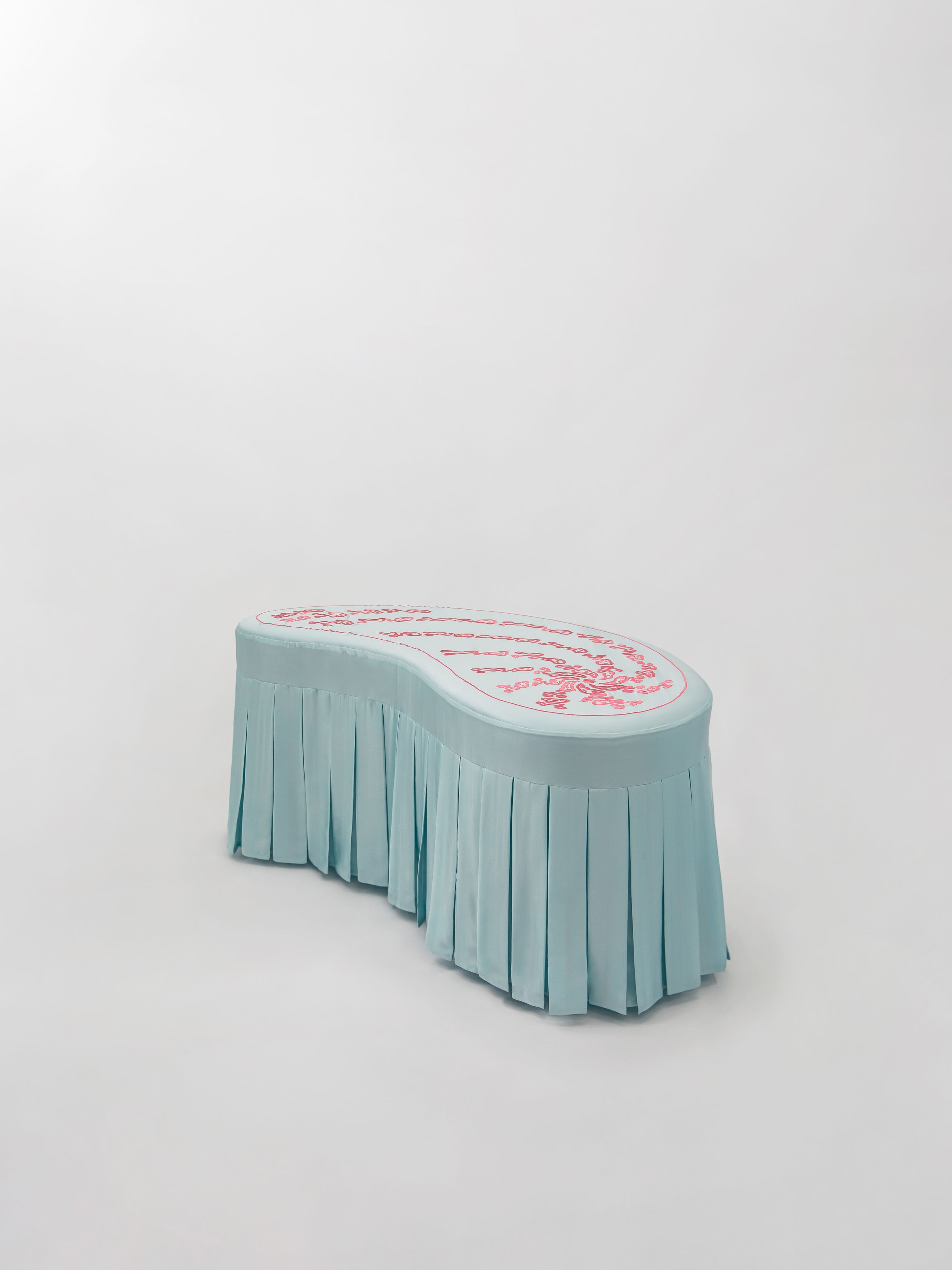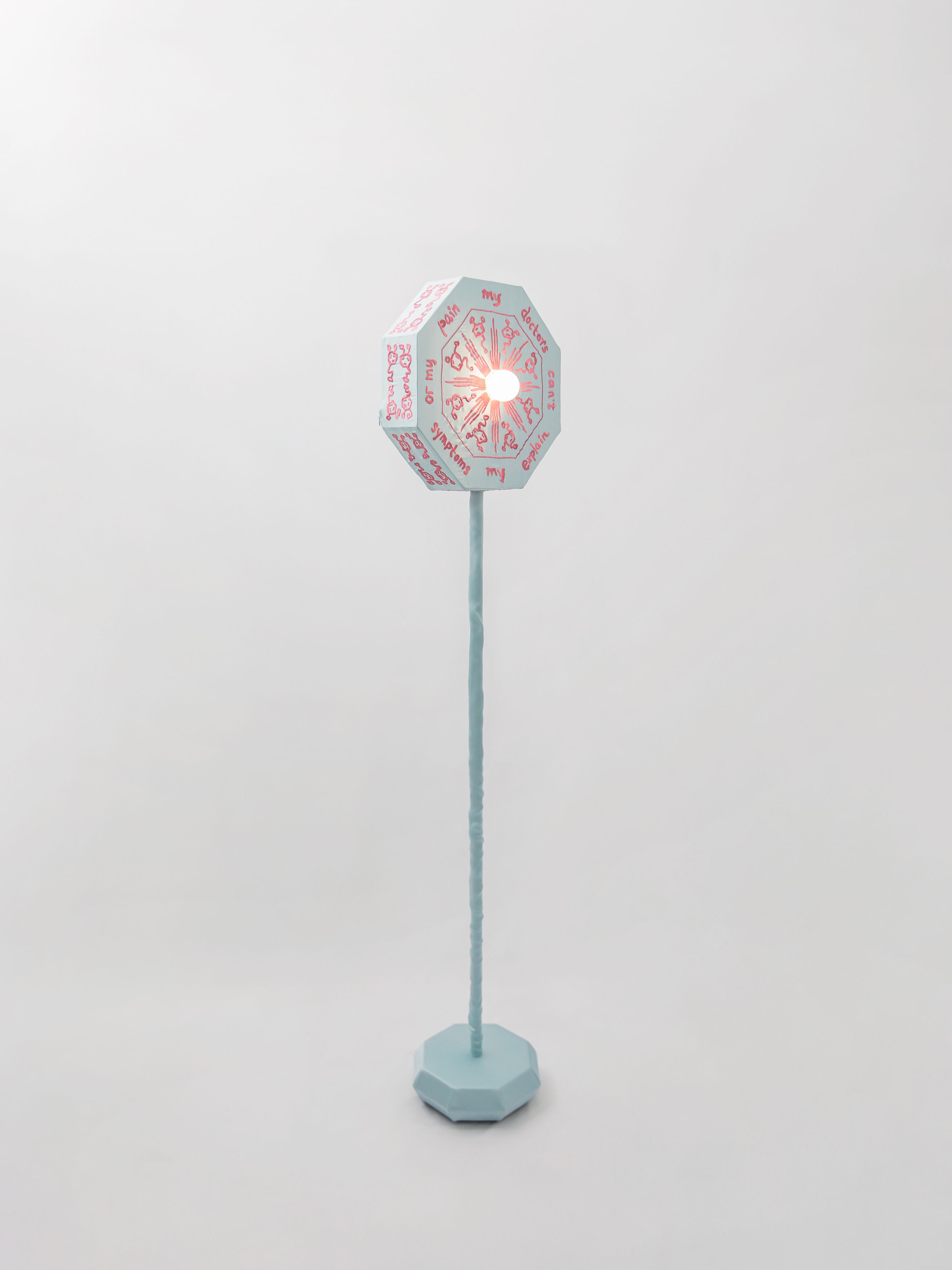
Ordinance of the Subconscious Treatment
Han describes the work, not as chairs or lamps but as “manifestations” through a process of “prescribing” visual and material content, exploring the dialectic of homeopathic traditions and scientific medicine through visual culture.
Installation Views
Artwork
Ordinance of the Subconscious Treatment
Ordinance of the Subconscious Treatment is a collection of neuroaesthetic objects and environments investigating mental health through contemporary Chinese culture. Intended to be both provoking and hypnotic, intimidating and soothing, the objects interweave religious and folkloric references with scientific and narrative cues informed by contemporary mental health practices. The Collection is reimagined for Salon 94 Design in new Moonlight Aqua silk with Magenta Sunrise embroidery.
Duyi Han, a previous student of architecture at Cornell University, focuses on traditional Chinese architectural motifs, specifically the decorative elements from Buddhist temples including crowns, parasols and draping banners. Han recontextualizes the motifs into functional design objects. At first sight, the iconography embroidered on the silk references religious symbolism, but in fact draws inspiration from the chemical symbols for neurological health. A coffee table decorated in the chemical compound for Amphetamine (more commonly known as Adderall), a pair of Melatonin Side Tables, a Vitamin D Daybed naturally paired with two Vitamin B-12 Chairs with pleated silk covers (the two vitamins support each other in nutrient absorption in the body). The symbols exist in the context of Western medicine while retaining the potency of ancient Taoist talismans. Called Fulu, these talismans, calligraphy drawn on objects, are used to dispel evil and illness. The practice remains widely used by Chinese folk healers today. Han describes the work, not as chairs or lamps but as “manifestations” through a process of “prescribing” visual and material content, exploring the dialectic of homeopathic traditions and scientific medicine through visual culture.
When lived with, the objects can play a dual role. The Oxytocin Cabinet (named after the hormone colloquially known as the love drug) stands tall as a tailism for happiness and health, while its silk drawers become the perfect storage for our daily prescribed supplements and love letters. Together, the curation plays with the psychological tension between fear and love, authority and empathy, eeriness and familiarity, sublime and ordinary, psychedelic and sober, pain and healing, conflict and reconciliation, brutality and subtlety, control and disorganization, illusion and reality, fullness and emptiness.

Press
StirPad
Flaunt Magazine








